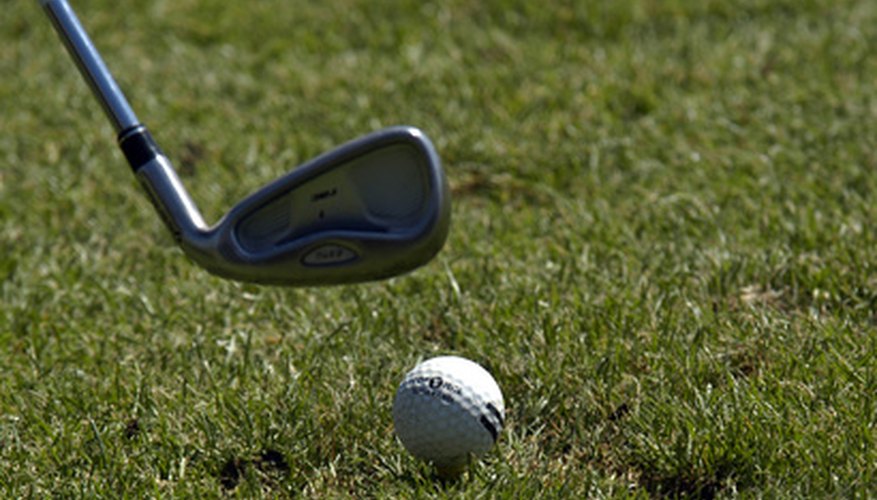A simple description of an oversized golf club iron is one that is larger than the standard set of clubs. Over the years, that standard has increased. For example, nearly every golf club iron in production today is considerably larger than those used 20 or 30 years ago. The evolution of technology has allowed golf club manufacturers to design larger golf club irons that are more forgiving to golfers by compensating for miss hits with larger club faces.
Identification
There is no numerical standard that identifies a golf club iron as oversized. In most cases, a manufacturer places a label on the iron head which explicitly identifies the club as oversized. Although more subtle, oversized golf club irons also generally include longer shafts than standard clubs. In part, the longer shaft allows a golfer to produce a greater club head velocity. Any inaccuracy or control problems associated with the longer shaft are made up for with the oversized club head.
- There is no numerical standard that identifies a golf club iron as oversized.
Attributes
According to Golfsmith magazine, a golf club manufacturing company, oversized golf club irons usually feature extremely deep cavity-backs which create more forgiveness on contact. Additionally, a wider sole results in a lower centre of gravity, making it easier for the average golfer to elevate the ball. In terms of feel, many oversized irons also counter club vibration on miss hits. Overall, these attributes are designed to improve the play of the typical golfer.
- According to Golfsmith magazine, a golf club manufacturing company, oversized golf club irons usually feature extremely deep cavity-backs which create more forgiveness on contact.
Purpose
In general, the larger surface area on an oversized iron creates a larger sweet spot. The result is a much higher percentage of hitting a quality shot. A professional golfer may use a smaller club head with a more centralised weight distribution behind the iron club head, because he is confident that he will hit the ball in that area. However, for an amateur golfer, the larger club face may mean the difference between a shot on the green and a slice into the woods.
- In general, the larger surface area on an oversized iron creates a larger sweet spot.
- A professional golfer may use a smaller club head with a more centralised weight distribution behind the iron club head, because he is confident that he will hit the ball in that area.
Legality
The United States Golf Association (USGA) keeps an up-to-date list of all illegal equipment on its website. Although some extremely oversized drivers have been banned from competitive play, as of April 2010, there are not yet any oversized irons that are deemed illegal. This means that amateurs and pros alike may utilise whatever iron size they consider best matches their playing style.
Limitations
One reason that many tour players choose not to use oversized golf club irons is because of the reduction in club head speed that results from additional drag resistance. In general, the smaller the club, the less resistance a golfer faces in trying to swing it. With the accurate swings of many professional golfers, the extra club face is not necessary. Thus, they take a smaller club head and make contact with the ball at a higher velocity.
- One reason that many tour players choose not to use oversized golf club irons is because of the reduction in club head speed that results from additional drag resistance.
- With the accurate swings of many professional golfers, the extra club face is not necessary.
